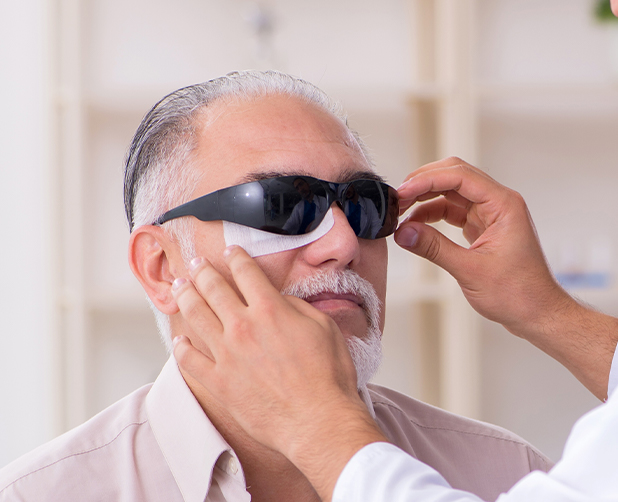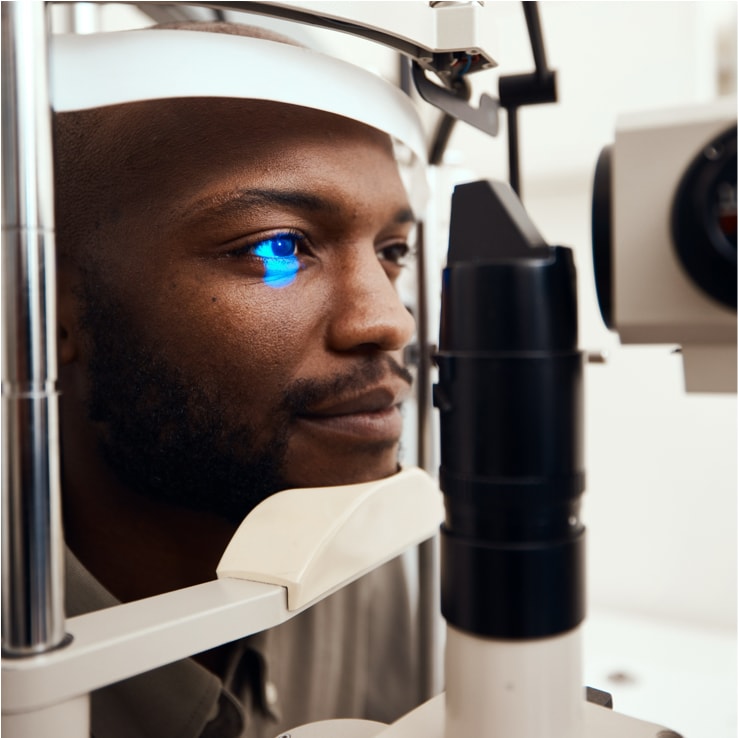
Prompt, Personalized Care When You Need It Most
When something doesn’t feel right with your eyes, don’t wait and wonder. Reach out to a team you trust. At Grove Eye Care, we’re here to help you handle eye emergencies with clarity, calm, and care.
Whether you’ve experienced an injury, a sudden change in vision, or symptoms that just don’t seem normal, we’re ready to guide you through the next steps. If you’re experiencing an eye emergency, please contact us right away.
We’ll help determine if you need immediate in-office care or if a referral to emergency services is the right next step.
Request AppointmentWhy Timely Care Matters
Conditions like retinal detachment, corneal abrasions, or infections can cause permanent damage if left untreated. Our team prioritizes same-day emergency care whenever possible. We’ll strive to get you seen quickly by someone who knows your eyes and your history.
We listen carefully, assess thoroughly, and make sure you understand what’s happening.


What Is an Eye Emergency?
If you’re unsure whether something counts as an emergency, the safest thing to do is give us a call. Acting quickly can make a difference in preserving your vision and avoiding long-term complications.
Common eye emergencies include:
- Sudden vision loss
- Flashes of light, new floaters, or a sudden curtain-like shadow in your vision
- Eye trauma or injury
- Severe or sudden eye pain
- Redness, swelling, or discharge that doesn’t go away
- Scratched cornea (feels like something is stuck in your eye)
- Sudden double vision
- Contact lens complications or stuck lenses
- Foreign objects that can’t be rinsed out with clean water
We’re Here to Help
If you’re experiencing sudden vision loss, an injury, or symptoms that just don’t feel right, contact us immediately.
Call us now to speak with a member of our team.

Richmond
Our Address
- 3601 Grove Ave
- Richmond, VA 23221
Contact Information
- 804-353-3937
- 804-358-1395
- frontdesk@groveeyecare.com
Hours of Operation
Midlothian
Our Address
- 14431 Sommerville Ct, Suite B
- Midlothian, VA 23113
Contact Information
- 804-888-8998
- 804-888-8999
- frontdesk@groveeyecare.com
Hours of Operation

What Our Patients are Saying
Wonderful experience from my initial call through to making my next appointment! The office team are friendly, professional, efficient, and kind. Dr. Deese took the time to listen to my concerns, examine my eye, explain my treatment plan and answer any questions. He is super personable and clearly very knowledgeable. I highly recommend the practice!
Michele
I’ve been coming here for a few years, but my former eye doctor retired last year, so my most recent appointment was with Dr. Wong. He was very thorough. I appreciated him indulging all my questions about the purpose of each machine, as well as, how different parts of the eye function. Great, seamless appointment.
Peighton
Dr Parsons is delightful. I’ve been going to Grove Eye Care for many years and when my doctor retired I was thinking maybe I’d look for someone closer to my home. But after meeting her and her caring professional team, I decided to stay…and am very happy I did!
Kathie
Dr. Parsons has been taking care of me and my family for years. The staff is amazing and very welcoming every time that I visit. They have state of the art equipment and technology. Dr. Parsons takes the time to thoroughly examine my eyes and she explains what she is doing step by step. The entire office is very clean and the environment is awesome!
Chaz
Top Notch! I had very nice experience. All the staff were very professional. My appointment on time. I was treated with the upmost of care and respect. All the care I was given was explained step by step not just of tests, but the why they were being done. My doctor made sure I understood the purpose of my whole exam. I was blown away by the attention I received. I appreciate their care.
Johnie
This was my first visit to your office. Everyone was helpful, polite positive and seem to enjoy their jobs. The girls at the front desk were fantastic. One even let me borrow her air pump to pump up my motorcycle tire. The doctor and the assistant eye specialist were excellent. Everything was explained to me and done in a professional manner.
Steven














